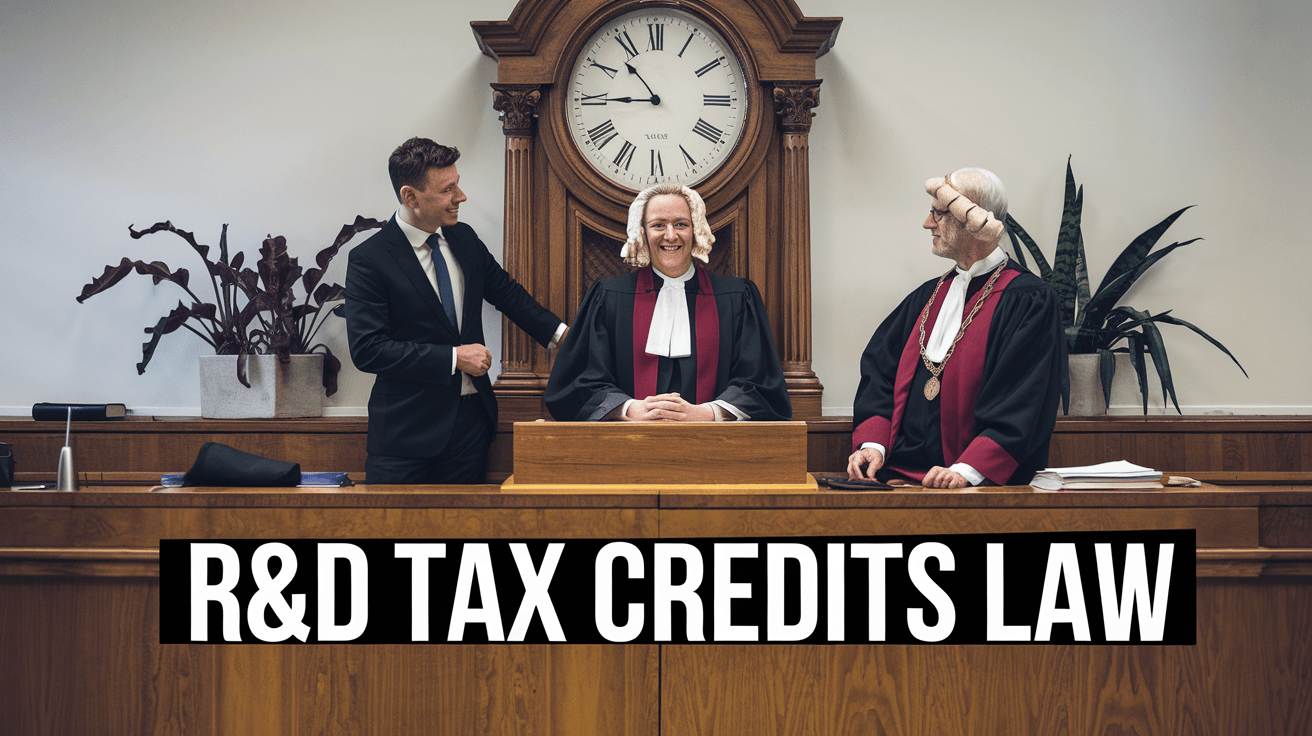R&D Tax Credits Standish Greater Manchester
R&D tax credits in Standish, Greater Manchester, are a valuable incentive provided by HMRC to encourage businesses to invest in research and development. These credits can significantly reduce your corporation tax bill or provide a cash payment if your business is loss-making. By claiming R&D tax credits, businesses can offset their tax liability, thereby improving their cash flow and reinvesting the savings back into the business.
To be eligible, your business must be seeking a technological or scientific advance within its industry. This includes projects that aim to develop new or improved products, processes, materials, services, or devices, and must resolve scientific or technological uncertainties. For small and medium-sized enterprises (SMEs), the SME R&D tax credit scheme allows companies to deduct an extra 130% of their qualifying costs from their yearly profit, although rates are set to change from April 1, 2023. Larger companies use the Research and Development Expenditure Credit (RDEC) scheme, which offers a different rate of relief. As of April 1, 2023, the RDEC rate will increase to 15% for qualifying R&D expenditure.

How Do R&D Tax Credits Benefit Standish Businesses?
R&D tax credits can significantly benefit Standish businesses by providing substantial tax savings and encouraging innovation. These credits allow businesses to offset their tax liability, thereby reducing their tax expenses and improving cash flow.
Financial Advantages
R&D tax credits offer a dollar-for-dollar offset against taxable income, which can lower the tax expense and improve cash flow for Standish businesses. This credit can be used to offset income tax liability, and any unused credits can be carried forward or back to offset taxes in other years.
For startups, the PATH Act and the Inflation Reduction Act have made it possible to use R&D tax credits to offset up to £500,000 per year of payroll taxes for Social Security and Medicare, providing an immediate cash infusion.
Competitive Edge in Innovation
R&D tax credits incentivize Standish businesses to invest in new technologies and processes, leading to innovation and growth. By rewarding research and development activities, these credits encourage companies to develop new products, improve existing ones, or reduce costs through innovation, giving them a competitive advantage in their respective industries.
This incentive can lead to higher profit margins, making businesses more attractive to potential investors and acquirers, and potentially increasing their valuation over time.

Which Industries Commonly Claim R&D Tax Credits?
Various industries in the UK frequently claim R&D tax credits due to their inherent need for innovation and technological advancement. Manufacturing, Technology, and Life Sciences are among the most prominent sectors benefiting from these credits.
Technology Sector
The technology sector, including Information and Communication and Software Development, is a significant beneficiary of R&D tax credits. Companies in this sector often engage in developing new software, improving existing technologies, and innovating communication methods, all of which qualify for R&D tax relief.
Manufacturing
Manufacturing is the largest sector claiming R&D tax credits, with a substantial number of claims each year. This sector involves developing new products, improving existing processes, and adapting to changing industry standards, all of which are eligible for R&D tax credits.
Life Sciences
The Life Sciences sector, including Healthcare and Pharmaceuticals, heavily relies on R&D to improve services, products, and treatments. Activities such as developing software solutions for medical records, testing new product prototypes, and reducing side effects of pharmaceuticals are all qualifying R&D activities.
Others
Other industries, such as Oil and Gas, Farming and Agriculture, and Construction, also benefit significantly from R&D tax credits. These sectors often invest in research and development to drive innovation, improve efficiency, and comply with regulatory standards. For example, Oil and Gas companies develop new technologies to find and extract resources, while Farming and Agriculture companies improve production processes and develop new machinery.

What Qualifies as R&D Under UK Tax Law?
To qualify for R&D tax relief under UK tax law, your project must seek to make an advance in science or technology and overcome scientific or technological uncertainty. This advance must benefit the field overall, not just your business.
Qualifying Activities
Qualifying activities for R&D tax relief include projects that aim to develop new or improved products, processes, materials, services, or devices. These projects must resolve uncertainty in science or technology that is not readily deducible by a competent professional in the field. Examples include developing new software processes, novel data management techniques, and innovative methods of capturing, transmitting, manipulating, and protecting data. Additionally, work on client projects that involve overcoming scientific or technological uncertainties can also qualify.
Excluded Activities
Activities that do not qualify for R&D tax relief include those that do not advance science or technology, such as developing a new website if it does not involve any technological innovation. Projects in social sciences, arts, humanities, or economics are also excluded. Furthermore, routine software development or the application of existing technologies without any innovative element do not qualify for R&D tax relief.

How Are R&D Tax Credits Calculated?
To calculate R&D tax credits, you need to determine the qualifying expenditure on your research and development activities and then apply the relevant tax relief rates. The calculation process differs depending on whether your company falls under the SME or RDEC scheme.
SME Scheme
For SMEs (Small and Medium-Sized Enterprises), the calculation involves enhancing your qualifying R&D expenditure. As of 1 April 2023, SMEs can deduct an amount equal to 86% of their qualifying R&D spending from their total taxable profits. For example, if your company spent £95,000 on qualifying R&D, the total R&D deduction would be £95,000 x 186% = £176,700. This results in a corporation tax saving of £20,425, assuming a corporation tax rate of 25%.
If your SME is loss-making, you can surrender the enhanced R&D expenditure for a cash credit. The current rate for this is 10% of the surrenderable loss, which can be worth up to 18.6p for each £1 of qualifying R&D expenditure.
RDEC Scheme
For larger companies or those using the Research and Development Expenditure Credit (RDEC) scheme, the calculation involves a different set of rates. As of 1 April 2023, the RDEC rate increased to 20%. This means for every £100 spent on eligible R&D activities, you receive a £20 R&D Expenditure Credit, provided as a cash payment. For instance, if a large company incurred £300,000 on R&D, the RDEC would be £60,000, which is added to the company’s taxable profit and then reduced from the corporation tax payable.

What Are the Recent Changes to UK R&D Tax Credits?
The recent changes to UK R&D tax credits involve significant reforms aimed at simplifying the system and curbing misuse. These changes, introduced in the 2023 Autumn Statement, include the merger of the SME R&D Tax Relief and the RDEC scheme.
Policy Updates
- Merger of Schemes: The SME R&D Tax Relief and the RDEC scheme have been merged into a single scheme, effective for accounting periods starting on or after 1 April 2024.
- R&D Intensive SMEs: Loss-making SMEs are now classified as 'R&D Intensive' if their qualifying R&D expenditure is 30% or more of their total expenditure, down from the previous 40% threshold. These companies are eligible for a higher rate of tax credits.
- New Tax Credit Rates: The merged scheme offers a 20% above-the-line credit, resulting in a post-tax benefit of 15% to 16.2% depending on the corporation tax rate. R&D intensive SMEs can receive up to a 27% tax credit.
- Expanded Cost Base: A wider range of costs, including pure mathematics, data, and cloud computing costs, are now eligible for tax relief.
- Compliance and Reporting: Claims must now include detailed project and cost information, and must be supported by an endorsement from a senior officer of the company. Claims must also be made digitally.
- PAYE and NIC Cap: A relief cap based on PAYE and NIC continues to apply, ensuring the system benefits UK companies and contractors.
Impact on Businesses
- Simplified Process: The merger of the schemes is intended to simplify the R&D tax relief landscape, although complexities still exist, particularly for companies that fluctuate between being R&D intensive and not.
- Reduced Benefits for Some SMEs: Prior to the changes, loss-making SMEs could claim up to 33.35% in tax credits, but this has been reduced to 18.6%. However, R&D intensive SMEs can now claim up to 27%.
- Increased Scrutiny: HMRC is now more stringent in ensuring compliance, with even small claims being thoroughly scrutinized to prevent misuse of the system.
- Grace Period for R&D Intensive Status: Businesses classified as R&D intensive can maintain this status for a grace period of one year, even if their R&D expenditure temporarily drops below the 30% threshold.

How Can Standish Businesses Apply for R&D Tax Credits?
To apply for R&D tax credits, Standish businesses need to engage in qualified research activities and follow a specific application process. This involves identifying and documenting eligible expenses and submitting the necessary forms to the IRS.
Application Process
- Identify Qualified Activities: Ensure your research activities meet the IRS's four-part test, which includes having a permitted purpose, being technological in nature, eliminating technical uncertainty, and involving a process of experimentation.
- Calculate Qualified Research Expenses (QREs): Determine the expenses that qualify for the credit, such as wages for R&D employees, third-party costs, and supplies required for research.
- Choose the Credit Method: Decide between the Regular Research Credit (RRC) and the Alternative Simplified Credit (ASC). The RRC involves a complex calculation based on historical data, while the ASC is a simpler method based on 14% of the excess of current-year QREs over 50% of the average QREs for the three preceding tax years.
- Fill Out Form 6765: Complete Form 6765, “Credit for Increasing Research Activities,” and file it with your original corporate income tax return. Indicate whether you are using the RRC or ASC method.
- Submit Additional Forms if Necessary: For small businesses claiming the R&D payroll tax credit, file Form 8974 along with Form 941. This allows you to offset up to $500,000 in payroll taxes.
Required Documentation
- Detailed Records: Maintain comprehensive records of your research activities, including project goals, technical uncertainties, personnel hours, and tasks completed. This can include financial records, business records, oral testimony, and technical documents.
- Expense Documentation: Keep records of all qualifying expenses, such as payroll records for R&D employees, receipts for supplies, and contracts with third-party researchers.
- Project-Based Time Tracking: Implement a system to track project goals, technical uncertainties, and personnel hours to support your claim. This documentation is crucial for proving eligibility for the R&D tax credit.
By following these steps and ensuring you have the necessary documentation, Standish businesses can effectively apply for and benefit from R&D tax credits.

What Common Mistakes Should Be Avoided When Claiming?
When claiming deductions and credits, it is crucial to avoid mistakes that can lead to penalties, interest, and even legal issues with HMRC. Here are some key mistakes to watch out for:
Overclaiming
Overclaiming expenses or deductions can get you into trouble with HMRC. This often happens when you claim personal expenses as business expenses. For instance, if you are self-employed, only claim expenses that are directly related to your business, such as office rent, equipment, and travel expenses. Ensure you keep accurate records to justify each claim, as HMRC may request proof to support your claims.
Underclaiming
Underclaiming expenses can result in an unnecessarily high tax bill. This mistake occurs when you are unaware of the expenses you are entitled to claim. For example, if you are self-employed, you can deduct expenses such as office supplies, travel, and equipment, but you must be aware of what is allowable. Keeping clear records of all your business receipts will help you claim the correct amount.
Documentation Errors
Documentation errors can lead to significant issues with your tax return. One common mistake is entering the wrong Unique Taxpayer Reference (UTR) or National Insurance (NI) number. Ensure these numbers are correct, as HMRC won’t be able to process your return without them. Additionally, missing or incorrect supplementary pages, such as those required for different income sources (e.g., SA102 for employees and company directors), can cause complications and delays in processing your tax return.

How Can Professional Advice Enhance R&D Tax Credits Claims?
Seeking professional advice can significantly boost your R&D tax credits claims by ensuring you meet all the eligibility criteria and maximize your claim amount. Experts in R&D tax credits can help you navigate the complex HMRC guidelines and identify all qualifying expenditures.
Role of Tax Credit Specialists
Tax credit specialists play a crucial role in the R&D tax credits process. Here are some key aspects of their role:
- Assessment and Eligibility: They assess your research and development projects to determine if they meet the HMRC definition of advancing overall knowledge or capability in a field of science or technology.
- Identifying Qualifying Expenditure: Specialists help identify the specific costs that qualify for R&D tax relief, such as staff costs, subcontractor fees, and consumables related to the R&D project.
- Compliance and Documentation: They ensure all necessary documentation is in place and that your claim complies with HMRC regulations, reducing the risk of HMRC enquiries.
- Maximizing Claims: Experts calculate the enhanced expenditure and ensure you claim the maximum amount possible under the relevant scheme, whether it's the SME scheme or the RDEC scheme.
Benefits of Expert Guidance
Expert guidance in R&D tax credits offers several benefits:
- Increased Accuracy: Professionals ensure that all eligible costs are included and that the claim is accurate, which can lead to a higher claim amount.
- Reduced Risk: By following HMRC guidelines precisely, specialists minimize the risk of your claim being rejected or subject to further scrutiny.
- Time Savings: Letting experts handle the complexities of the claim process saves you time, allowing you to focus on your business.
- Cash Flow Benefits: For loss-making companies, expert guidance can help secure vital cash credits, and for profit-making companies, it can reduce the corporation tax bill significantly.
In Conclusion
R&D tax credits in Standish, Greater Manchester, are a valuable incentive for businesses investing in research and development, offering significant tax savings and cash flow benefits. These credits, administered by HMRC, encourage innovation by rewarding companies that work on innovative projects in science and technology.
To qualify, your project must aim to achieve an advance in science or technology, overcome scientific or technological uncertainty, and address problems that an experienced professional in the field couldn’t resolve easily. For SMEs, this involves deducting an extra 86% of qualifying costs from their yearly profit, while larger companies use the Research and Development Expenditure Credit (RDEC) scheme with a rate of 15% for expenditure incurred on or after April 1, 2023.
Engaging a professional, such as those at R&D Tax Credits UK, can significantly enhance your claim by ensuring all eligibility criteria are met and maximizing your claim amount. These specialists assess your projects, identify qualifying expenditures, and ensure compliance with HMRC regulations, reducing the risk of errors and rejections.
If you are a business in Standish, Greater Manchester, involved in innovative research and development, do not miss out on the opportunity to reduce your tax liability or receive a cash payment. Contact R&D Tax Credits UK today to assess your eligibility and start the process of claiming your R&D tax credits. Their expertise will help you navigate the complex process and ensure you receive the maximum benefit for your business.

